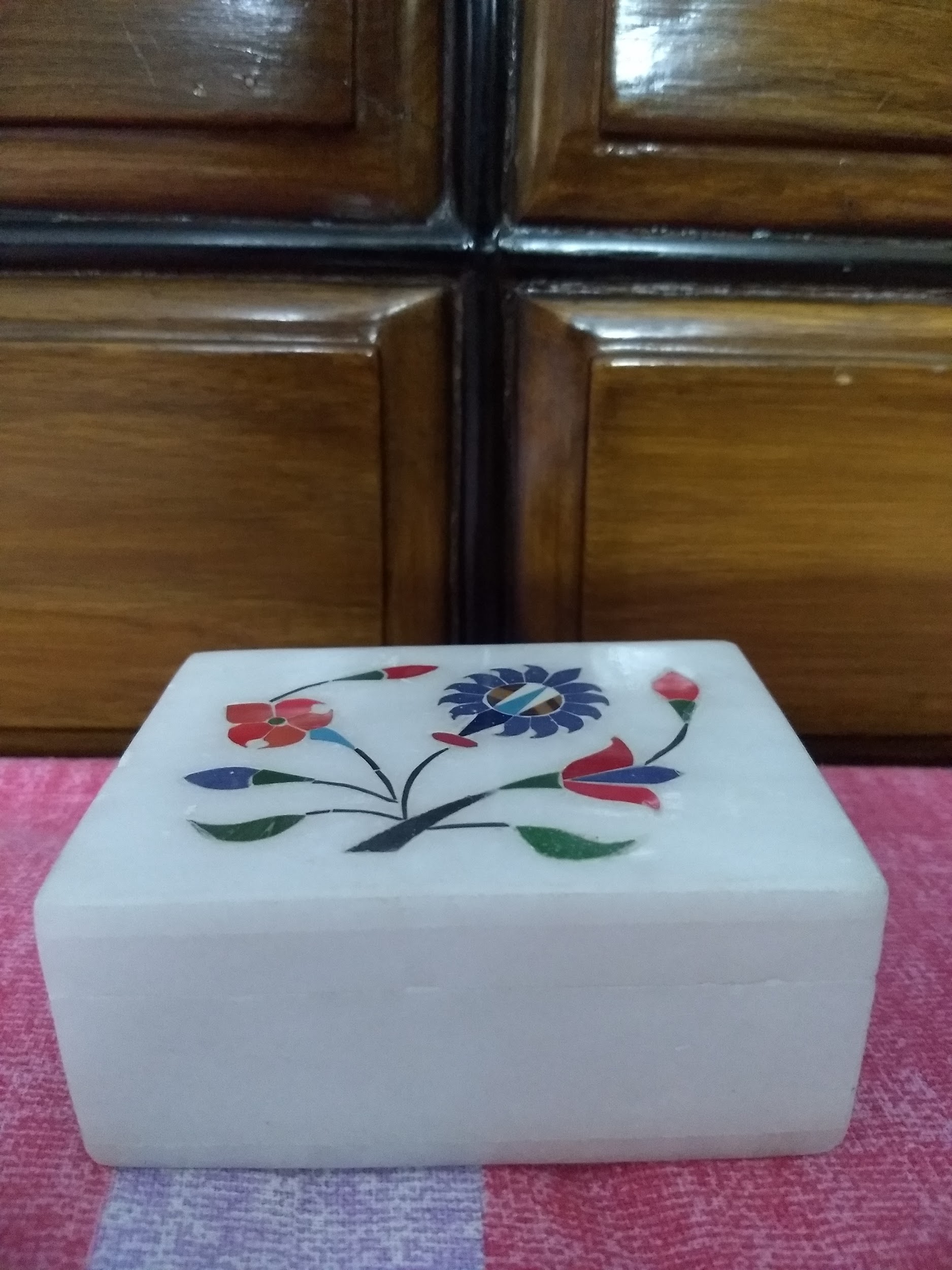Marble Box
The city of Agra is famous for its marble inlay work, which is cherished to such an extent that certain artisans are invited internationally to portray their talents. In the city itself, their work can be found in various shops and markets. Mostly, the marble and sandstone quarries in Rajasthan contribute towards the making of such items. The marble quarry of Makrana, for example, played a major role in the construction of Taj Mahal.
The Italian word pietra dura literally means 'hard rock'. This intricate marble inlay artwork originated in Rome in the 1500s, but acquired its fully developed form in Florence. European travellers brought pietra duraworks as presents for Shah Jahan who was impressed with the technique and began incorporating it in his projects. He refined the technique, which came to be known as parchinkari in India, over several years. The art became more intricate, symmetrical and distinct from pietra dura. The inlaid stone pieces were made smaller and used precious stones, in Indian marble, black marble and Indian jade. The handmade craft of parchinkari requires utmost precision. Two categories of karigars are involved in the process, in which even a single flower can take several days to make. The sadakars do the basic cutting and carving, and the pachikars perform the inlay work, which requires expertise in using tools like chisels and grinding stones. One design can include a plethora of coloured stones, like malachite, cornelian, jasper, lapis lazuli, and coral.
Made in Agra, the box is around 5 years old.
Contributed By :
Anonymous
